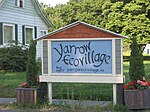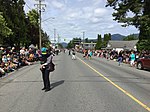Columbia Valley (Lower Mainland)
Landforms of Lower MainlandLandforms of Whatcom County, WashingtonLower MainlandNew Westminster Land DistrictPopulated places in the Fraser Valley Regional District ... and 5 more
Unincorporated settlements in British ColumbiaUse Canadian English from January 2023Use mdy dates from September 2023Valleys of British ColumbiaValleys of Washington (state)
The Columbia Valley is a small valley and unincorporated settlement stretching southwest of Cultus Lake and extending across the Canada–United States border into Whatcom County, Washington. It is located to the south of the City of Chilliwack and east of Abbotsford, lying between Vedder Mountain and the main bulk of the Cascade Mountains. There is no border crossing in the valley, which has only a few farms in it. The community of Lindell Beach is located in it, on the south shore of Cultus Lake. Its terrain is similar to that of the Fraser Valley, though at a slightly higher elevation.
Excerpt from the Wikipedia article Columbia Valley (Lower Mainland) (License: CC BY-SA 3.0, Authors).Columbia Valley (Lower Mainland)
Henderson Road, Area H (Cultus Lake/Columbia Valley)
Geographical coordinates (GPS) Address Nearby Places Show on map
Geographical coordinates (GPS)
| Latitude | Longitude |
|---|---|
| N 49 ° | E -122.08333333333 ° |
Address
Henderson Road
Henderson Road
V3G 1T7 Area H (Cultus Lake/Columbia Valley)
British Columbia, Canada
Open on Google Maps







